From Sea to Shining Sea: Great Ways to Explore Canada
Here are six ways to experience the greatest scenery of America’s neighbor to the north
/https://tf-cmsv2-smithsonianmag-media.s3.amazonaws.com/filer/20130422083123CanadaLakeLouise-web.jpg)
Americans love Canada. Year after year, Americans polled by Gallup indicate that they have a strong affinity toward Britain, Germany, Japan, France and India. But Canada consistently scores higher than any other place. In 2013, 90 percent of Americans polled said they have a “favorable” impression of our neighbor to the north. Only 6 percent gave an “unfavorable” rating. Americans’ love of Canada may be easy to explain: Canada is friendly, safe, familiar and mostly English-speaking. Its cities are sophisticated and modern—especially Vancouver, at the edge of both mountain and sea, and Montreal, known largely for its 17th-century architecture. Though many travelers are true adventurers with an appetite for the strange and foreign, it may be Canada’s very lack of the exotic that so appeals to the majority of Americans.
But perhaps Canada’s greatest virtue is its wilderness—some of the finest, most unspoiled land anywhere. The wild Canadian Rockies resemble their counterpart peaks to the south, but they are less trammeled, less cut by highways and more extensive, running as far north as the lonesome Yukon. In the rivers of western British Columbia, salmon still teem, as lower-48 Americans can only imagine from black-and-white photos from a century ago. Far to the east, the cod-fishing communities of Newfoundland and Nova Scotia are quaint and cozy, with an irresistible Scandinavian charm. Canada’s wildlife, too, trumps America’s. Between grizzly bears, black bears, cougars and wolves, large predators roam virtually every acre of the nation, whereas the lower 48 states have been hacked into a fragile patchwork of preserved places. There are elk, caribou, bison and moose throughout Canada. Indeed, the nation’s wild creatures and places embody the Wild West that America conquered—and that’s before we consider the polar bears, all 15,000 or more of them living along Canada’s Arctic coast and Hudson Bay. Indeed, Canada’s far north is like no other place. Tundra studded by thousands of lakes and drained by long and wild rivers makes for a canoer’s and fisherman’s paradise.
Here are a few adventure travel ideas to bring you into the best of Canada’s wild country:
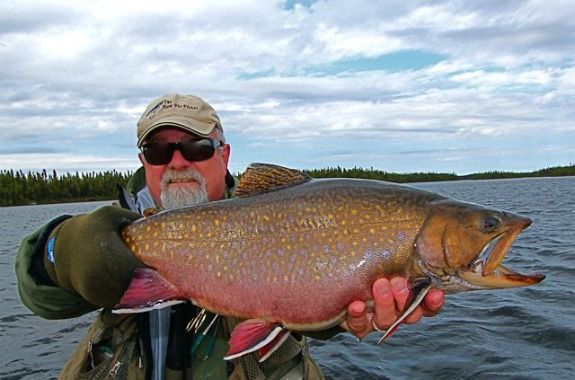
Fly Fishing for the Labrador Brook Trout. Many American anglers know the brook trout as a dainty sliver of fish, speckled beautifully with blue-and-red spots and worm-like vermiculations. It’s a fish as pretty as it is little, happy to bite a fly, and often grossly overpopulated in the waters to which it has been introduced throughout America. But in eastern Canada, the brook trout—actually a species of char—is comfortably at home—and big. The species originated in the streams and lakes here, and nowhere else do brookies grow so huge. Brook trout as large as 15 pounds or more have been caught throughout eastern Canada, but Labrador is especially famous for its consistently bulky specimens. The Churchill River system—both above and below the 245-foot Churchill Falls—boasts large brook trout, and lots of them. So does the smaller Eagle River system, among other drainages. Local lodges and guide services offer packaged trips based around river fly fishing, in case you need a soft pillow and someone to cook you dinner each night. More rewarding, if more challenging, can be to go yourself. Other species to expect while pursuing big brooks include northern pike, lake trout, Arctic char and, in some river systems, wild Atlantic salmon. As you hike, watch for bears, moose, eagles and other iconic creatures of the American wilderness. Canadian, that is.
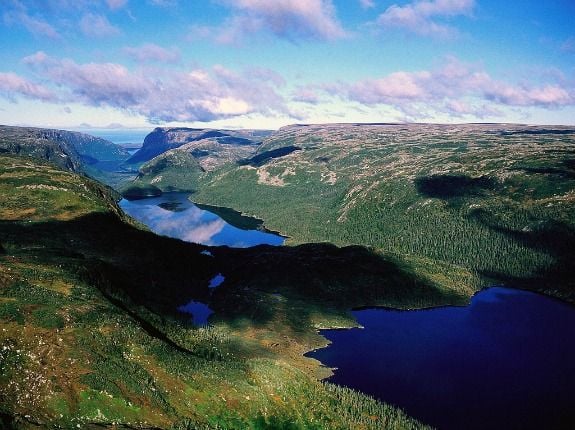
Cycle Touring Newfoundland. Rocky shorelines, small winding roads, villages hundreds of years old, mountains, cliffs, clear waters and fjords: Such features make up the eastern island of Newfoundland, one of Canada’s most beautiful islands. With its international airport, the capital city of St. John’s makes an ideal starting point for a cycling tour of the Avalon Peninsula. Though just a small promontory on Newfoundland’s south side, the Avalon Peninsula features a great deal of shoreline and enough scenery and culture to keep one occupied for weeks. Place names like Chance Cove, Random Island, Come by Chance, Witless Bay and Portugal Cove embody the rugged geography’s happenstance, blown-by-the-wind spirit. However early North American explorers may have felt about landing upon these blustery shores, for travelers of today, the area is a renowned gem. On the main body of the island of Newfoundland, cyclists also find magnificent exploration opportunities along the north-central coast—a land of deep inlets and rocky islands for hundreds of miles. Another touring option takes travelers from Deer Lake, near the western coast, northward through Gros Morne National Park, the Long Range Mountains, and all the way to the north end of the island, at L’Anse aux Meadows, the site of an excavated Viking dwelling. Camping in the wild is easy in Newfoundland’s open, windswept country—and even easier in the wooded interior. But note that distances between grocery stores may be great, so pack food accordingly. Also note that the folks here are reputably friendly, which—in Newfoundland—can translate into moose dinners in the homes of strangers. Pack wine or beer as a gift in return. Not a cyclist? Then get wet. The coast of the island offers a lifetime’s worth of kayak exploration. Want to get really wet? Then don a wetsuit and go snorkeling. The waters are clear and teeming with sea life and shipwrecks.
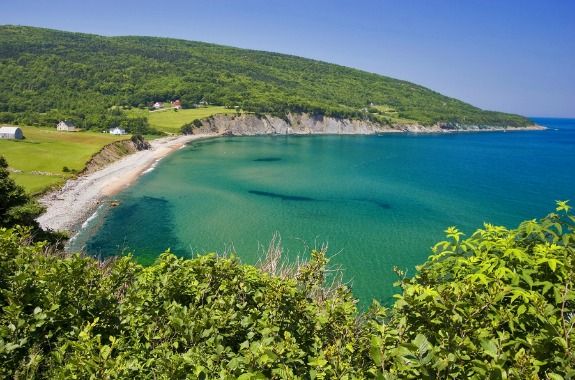
Hiking in the Canadian Rockies. Though the mountains are rocky, the trout streams clear and the woods populated by elk, wolves and bears—you aren’t in Montana anymore. The Canadian Rockies are much like the same mountain range to the south—but they’re arguably better. Fewer roads mean less noise, less people and more wildlife. A great deal of the Canadian Rockies is preserved within numerous wilderness areas, as well as the famed Jasper and Banff national parks. Cycling is one way to access the vast reaches of wild country here—but no means of motion is so liberating in this rough country as walking. So tie your boot laces at Lake Louise, often considered the queen attraction of the region, or in the town of Banff itself, then fill a pack with all the gear and food of a self-sufficient backpacker and hike upward and outward into some of the most wonderful alpine country of Alberta, and the whole of North America.
Canoeing the South Nahanni River. This tributary of the great Arctic-bound Mackenzie River system is considered the iconic wilderness canoeing experience of Canada and one of the most epic places to paddle on our planet. The South Nahanni runs 336 miles from the Mackenzie Mountains, through the Selwyn Mountains and into the Liard River, which in turn empties into the mighty Mackenzie. The South Nahanni flows for much of its length through the Nahanni National Park Reserve, a Unesco World Heritage site, and has carved some spectacular canyons through the ages, making for cathedral-like scenery as spirit-stirring as Yosemite. The region is practically roadless, and while hikers may find their way through the mountains and tundra of the South Nahanni drainage, the most comfortable and efficient means of exploring the area is probably by canoe. Most paddlers here either begin or end their trips at the enormous Virginia Falls, a spectacular cascade that includes a free-fall of 295 feet and a total vertical plunge of 315 feet—twice the height of Niagara Falls. Others portage around the falls on full-river excursions that can last three weeks. Serious yet navigable whitewater sections can be expected, though most of these rapids occur in the first 60 miles of the river before the South Nahanni lays out en route to the Arctic Ocean. Not a single dam blocks the way, and wilderness enthusiasts have the rare option of continuing down many hundreds of miles of virgin river, all the way to the sea.
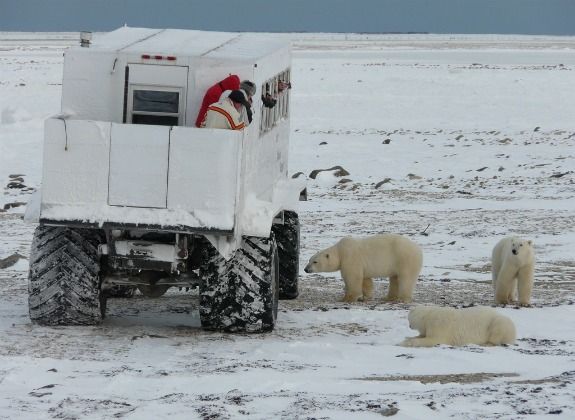
Seeing Churchill’s Polar Bears. Americans killed off most of their own big bears—namely the grizzly—as they pushed through the frontier and settled the West. In Churchill, however, locals have learned to live in a remarkably intimate relationship with the greatest bear of all. Polar bears gather along the coast of Hudson Bay in great numbers each autumn as the days shorten and temperatures drop. As long as the sea remains unfrozen, the bears stay around, and sometimes within, the town of 800 people. The animals wrestle, fight, climb over their mothers, roll on their backs and soak in the low-hanging sun, and tourists love it. Thousands come every year to see Churchill’s bears. If you do, don’t go hiking. The bears are wild animals and may be the most dangerous of all bear species. Instead, book in advance and join a tour in one of the bear-proof vehicles called “tundra buggies” that venture from Churchill onto the barren Canadian moors, rolling on monster tires as paying clients lean from the windows with cameras. The bears often approach the vehicles and even stand up against the sides to greet the awed passengers. Long lenses may never leave the camera bag, and wildlife photography rarely gets easier than in the town rightly dubbed the “Polar Bear Capital of the World.”
Taste Wine and Pick Peaches in the Okanagan Valley. Between so much adventuring through field, mountain and stream, wine tasting may be a welcomed diversion—and, yes, they make good wine in Canada. The Okanagan Valley of British Columbia is the chief producing region. A sliver of fertile farm country about 130 miles north to south, the Okanagan Valley lies just west of the Rockies and about a four hours’ drive east of Vancouver. Crisp white wines—like Pinot Blanc, Gewurztraminer and Riesling—are the Okanagan Valley‘s claim to fame, while many wineries produce reds like Syrah, Cabernet Franc and Pinot Noir. The valley is also famous for its roadside fruit stands,where heaps of apples, pears, apricots, peaches and cherries may prove irresistible to those pedaling bicycles. Many farms offer “U-Pick” deals—the best way to get the freshest fruit. But what sets this wine-and-fruit valley apart is how the vineyards are planted smack in the midst of some of the continent’s most tremendous and wild mountains—a juxtaposition of elegant epicurean delights and classic North American wilderness that, perhaps, only Canada could offer.
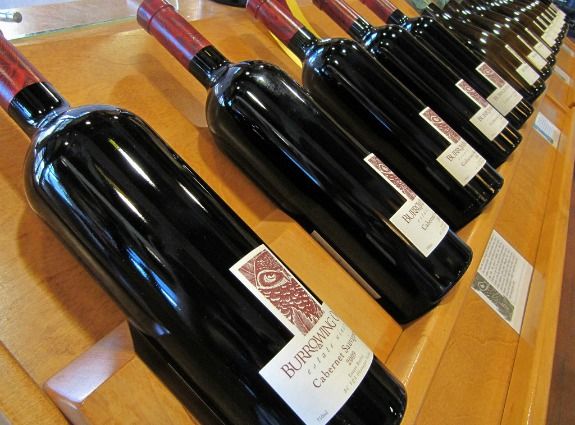
/https://tf-cmsv2-smithsonianmag-media.s3.amazonaws.com/accounts/headshot/Off-Road-alastair-bland-240.jpg)
/https://tf-cmsv2-smithsonianmag-media.s3.amazonaws.com/accounts/headshot/Off-Road-alastair-bland-240.jpg)